‘It’s a call to action, it’s a call to worry’: Daniel Libeskind on how art is leading the fight against climate change
His parents fled the holocaust, but today he fears an even more insidious enemy. The architect speaks to William Cook about how his sculptures depict a modern vision of impending doom

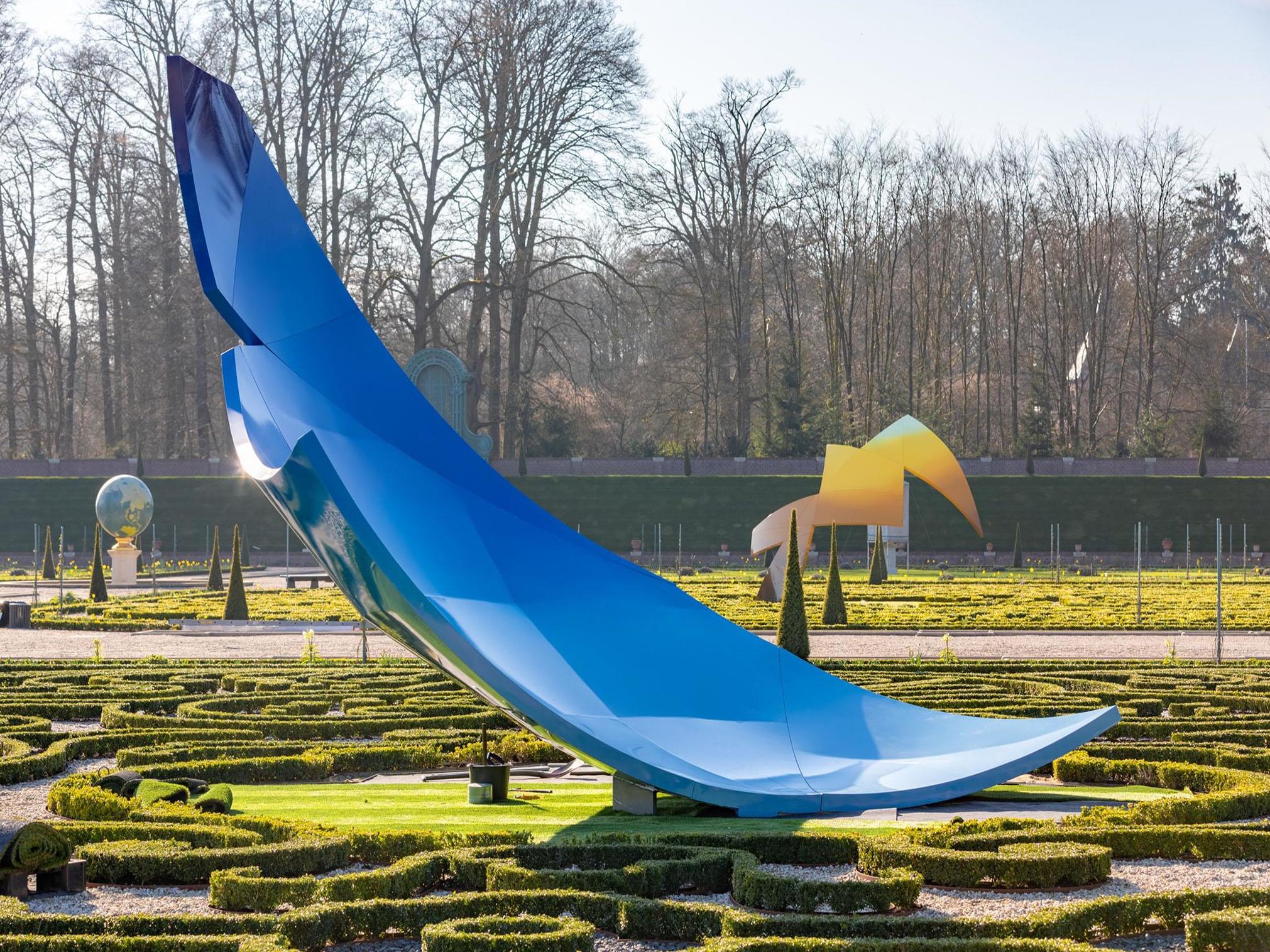
In the ornamental gardens of Paleis Het Loo, a baroque mansion in Holland, Daniel Libeskind is talking about his four new sculptures, which have been erected amid these tidy flowerbeds. Sculptures by Daniel Libeskind? Isn’t he an architect, not a sculptor? Well, as it happens, yes and no.
Libeskind is famous for his monumental buildings: the Jewish Museum in Berlin, the Imperial War Museum North in Salford and the master plan for Ground Zero, the site of the World Trade Centre in New York – monolithic structures which are as much sculptural as architectural. For Libeskind, these two disciplines have always been intertwined. “I see them as very interconnected,” he tells me. “Borromini, Bernini, Michelangelo...” The names of sculptor-architects of the Renaissance rattle off his tongue.
And so these four sculptures aren’t that much of a departure, especially when their meaning becomes clear. This sculptural quartet is called The Garden of Earthly Worries, after Hieronymus’s Bosch’s great triptych, The Garden of Earthly Delights. Yet while Bosch’s painting depicted a medieval vision of paradise, Libeskind’s sculptures depict a modern vision of impending doom.
Like a futuristic version of the four horsemen of the apocalypse, Libeskind’s sculptures portray the four toxic byproducts of our rampant consumerism: Nitrous Oxide, Carbon Dioxide, Methane and Tropospheric Ozone. “We have to do something constructive – the sculptures are part of that conversation,” he says. “We have the means, we have the knowledge – we have the scientific ability. It’s not a mystery to us. We understand what we can do. It requires solidarity among people, to gather together and make that change.”
Each of these jagged, lurid sculptures stands three metres high. Each one comprises a fragment of a gigantic shattered globe. The symbolism is overt – you could hardly call it subtle – but as global warming accelerates, the time for being oblique or cryptic has long since passed. “How can we visualise these threats, which are actually invisible?” he asks, emphatically. “We are changing the world, in a catastrophic way. We are in a vulnerable state. We think of wars and conflicts that are taking place, but the biggest war is the climate war. That is an opponent that is out of scale with all those other conflicts.”
Libeskind’s sculptures make a potent statement about human hubris. These formal gardens were constructed by a ruling class which regarded mankind as the master of the natural world, rather than its servant, and regarded the earth’s resources as something to be exploited, not protected. Libeskind’s sculptures are the ghostlike intruders in this garden of earthly delights.
We think of wars and conflicts that are taking place, but the biggest war is the climate war
“It affects everybody because no one can possibly escape it,” he says, of climate change. “It’s global, and it’s pressing. It’s not in the next thousand years. The next 50 years, a hundred years will decide what will happen. So yes, it’s a call to action, it’s a call to meditation – it’s a call to worry. And if we start with worry, I think we might get to a place where we’re conscious that walking around in gardens and just thinking about the beauty of the past is not enough. We have to think about what’s happening now.”
Paleis Het Loo isn’t his only project here in Holland. He’s currently designing a Holocaust Memorial in Amsterdam, dedicated to the hundred thousand Dutch Jews who perished during the Shoah. “It’s important that people don’t forget.” Yet sadly, some people have objected. “The city of Amsterdam and the community are very supportive, and, I think, most people in Amsterdam, but there’s a small group which is denying the possibility. It’s now in the courts. It’s an obstacle. It’s kind of depressing, given that antisemitism and neo-Fascism and authoritarianism are sweeping through the world, to see that they’ve gotten this far.”
However, he’s optimistic about Europe, the continent where he was born and raised. “It’s a completely different world from the one I left, which was a world of darkness and of fear and of oppression.”
Daniel Libeskind is 72, but he could easily pass for 10 years younger.
He’s short and stocky, with an engaging grin and a thick bush of silver hair. He was born in 1946 in Lodz, in Poland. His parents were Polish Jews who’d survived the Holocaust. When the Nazis came they’d fled to Russia, and had been interned in Siberia. After the war they’d returned to Lodz, only to find that virtually all the relatives they’d left behind had been killed.
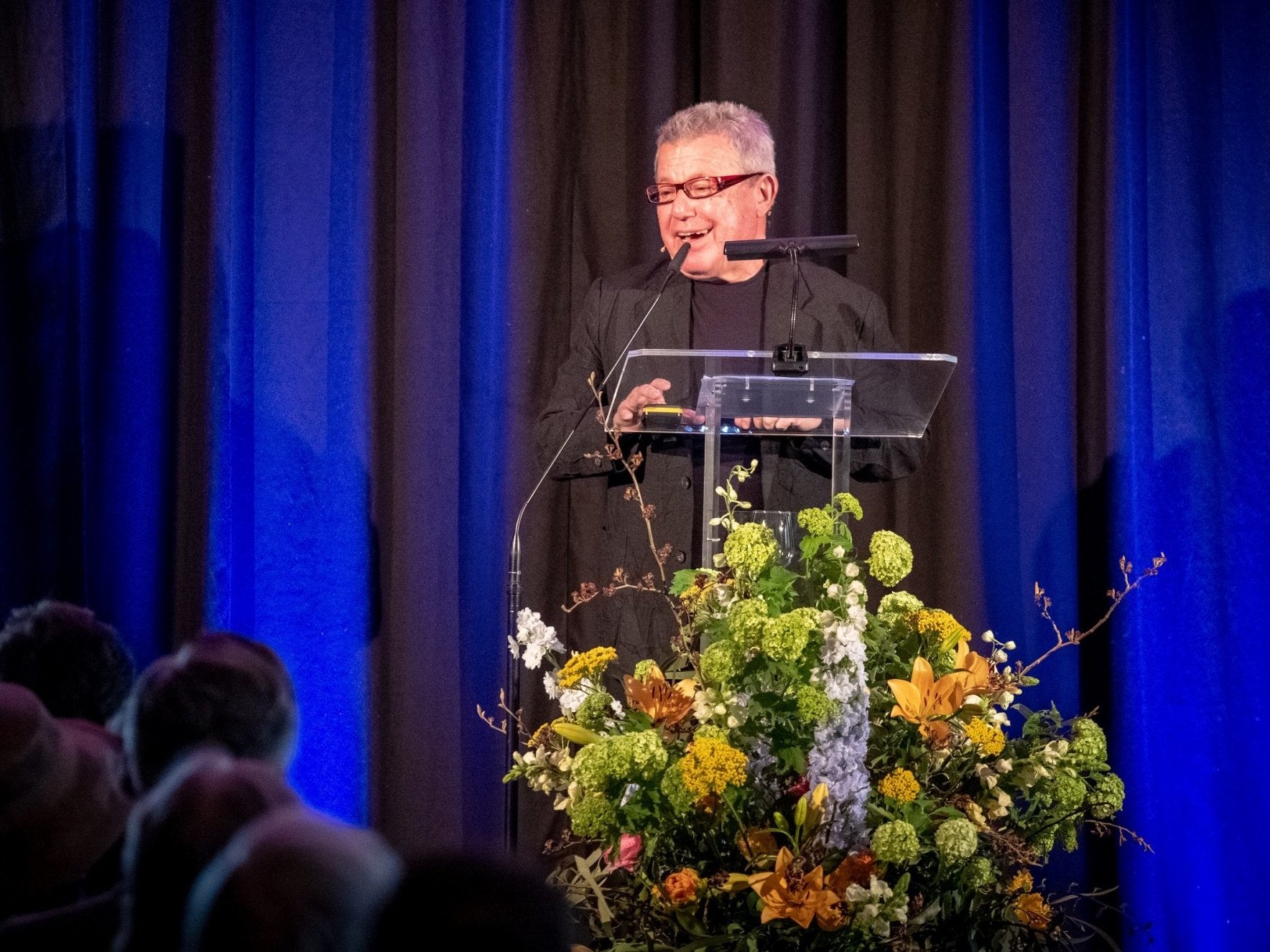
Libeskind learned the accordion from an early age and quickly became a virtuoso. However in the communist Poland of his childhood antisemitism remained rife. In 1957 his parents took him and his sister to Israel. There, Libeskind won an America-Israel Cultural Foundation scholarship, which enabled his family to emigrate to America. In 1959, they crossed the Atlantic, travelling by boat to New York City. For the Libeskinds, America was like the promised land. “Why is everybody so nice to us?” his father asked him. “Why is everybody smiling?” They found an apartment in the Bronx, and Daniel secured a place at the Bronx High School of Science.
Despite its location, in one of New York’s toughest neighbourhoods, the Bronx High School of Science is a one of the leading high schools in America. It boasts eight scientific Nobel prize winners among its alumni, more than any other US high school. Pupils pay no fees but the entrance exam is extremely competitive. Only a few per cent pass. Daniel passed.
In 1966 Libeskind met his wife Nina Lewis. They married in 1969. For their honeymoon they travelled across America, visiting various buildings by Frank Lloyd Wright. She bore him three children – Lev, Noam and Rachel. She’s always been his right-hand woman, the brains behind his architectural firm.
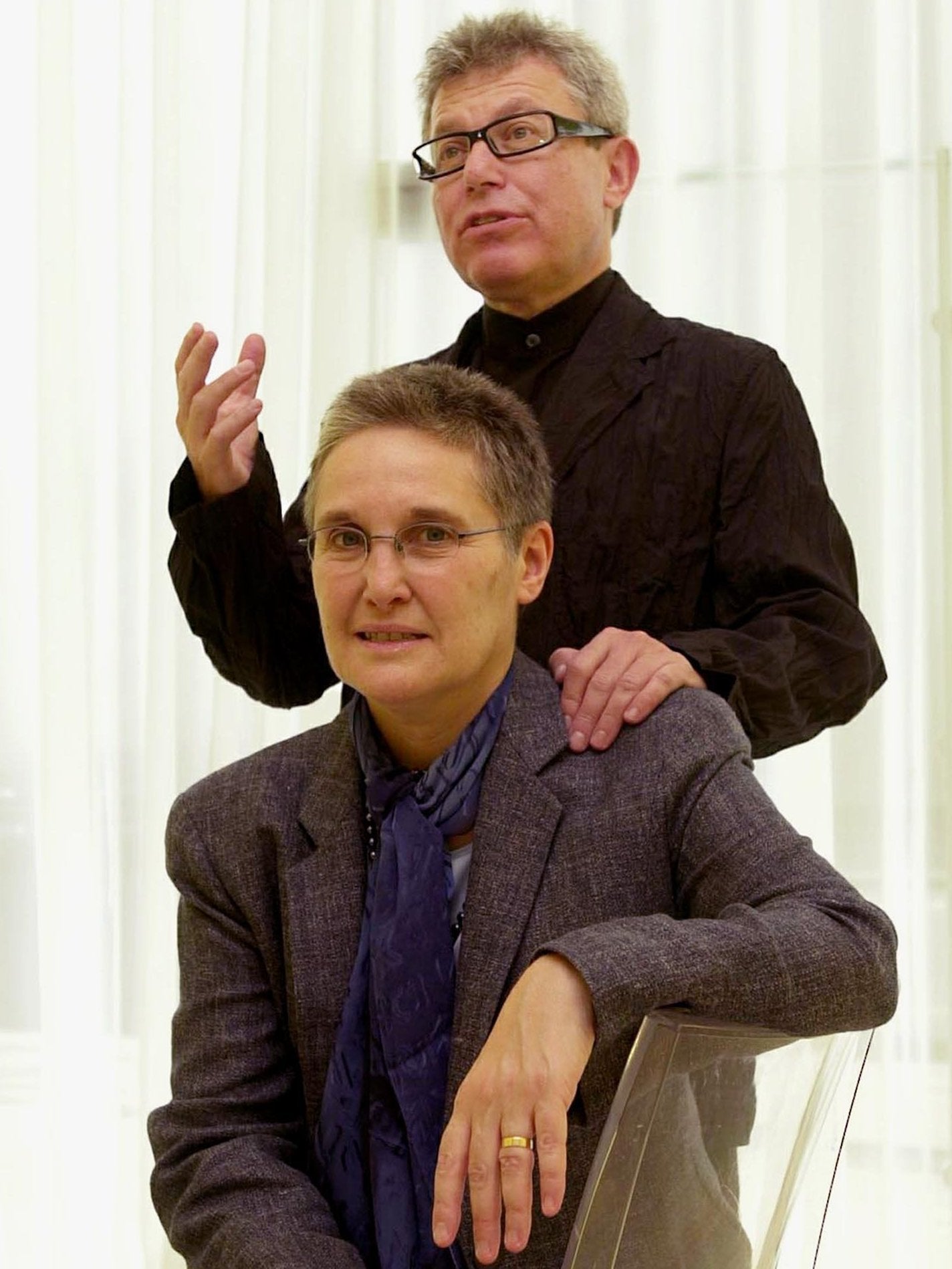
In 1970 Libeskind graduated from the Cooper Union for the Advancement of Science & Art in NYC with a degree in architecture – and then crossed the Atlantic to do a postgraduate degree in Colchester. “I’m often asked – why did I go to the University of Essex?” he said, in a speech on his return to the university in 1999. He wanted to study there because he’d heard something radical was happening there – a new course designed to challenge our understanding of how architecture affects us. For Libeskind, this was a revelation. It transformed his thinking. It taught him to realise the importance of human relationships in architecture, and the effect of technology upon the psyche. “Architecture is something that is amenable to human discourse, something which has to do with how people dream and think.” This spiritual awareness has informed his humanistic practice ever since.
He returned to America, but for a long time he built nothing. For seven years he taught at Cranbrook Academy of Art in Michigan. After that he relocated to Milan, where he established his own “educational community”, called Architecture Intermundium. By all accounts he was a brilliant teacher, but critics dismissed his designs as impractical. Despite his success as an architectural theorist, he looked destined to remain a “paper architect”. When he finally secured a commission, in 1987, for a housing project in West Berlin, the job was promptly scuppered by the fall of the Berlin Wall.
Libeskind finally got his big break when he won the competition to design Berlin’s new Jewish Museum, built to replace the one the Nazis shut down in 1938. His design was revolutionary – a building without a doorway, which could only be accessed through a tunnel. I visited it when it was still empty. The effect was overwhelming. It felt more like a place of worship than a conventional museum. As Libeskind says himself, a building is like a story. This building told the two-thousand-year story of German Jewry.
It wasn’t easy for him to come to Berlin, the capital of the Holocaust. But before the Holocaust, Berlin was the unofficial capital of European Jewry, and since the Shoah, against all odds, it’s become a Jewish cultural capital again. “I avoided Germany, as many people of my background did,” he says. “That project brought me to Berlin, and I’m so glad because I saw a change in Germany.” In Berlin he encountered a new breed of Germans. “You get to see something completely different, and something inspiring – a generation of fantastic people who do bear witness and are interested in their past.”
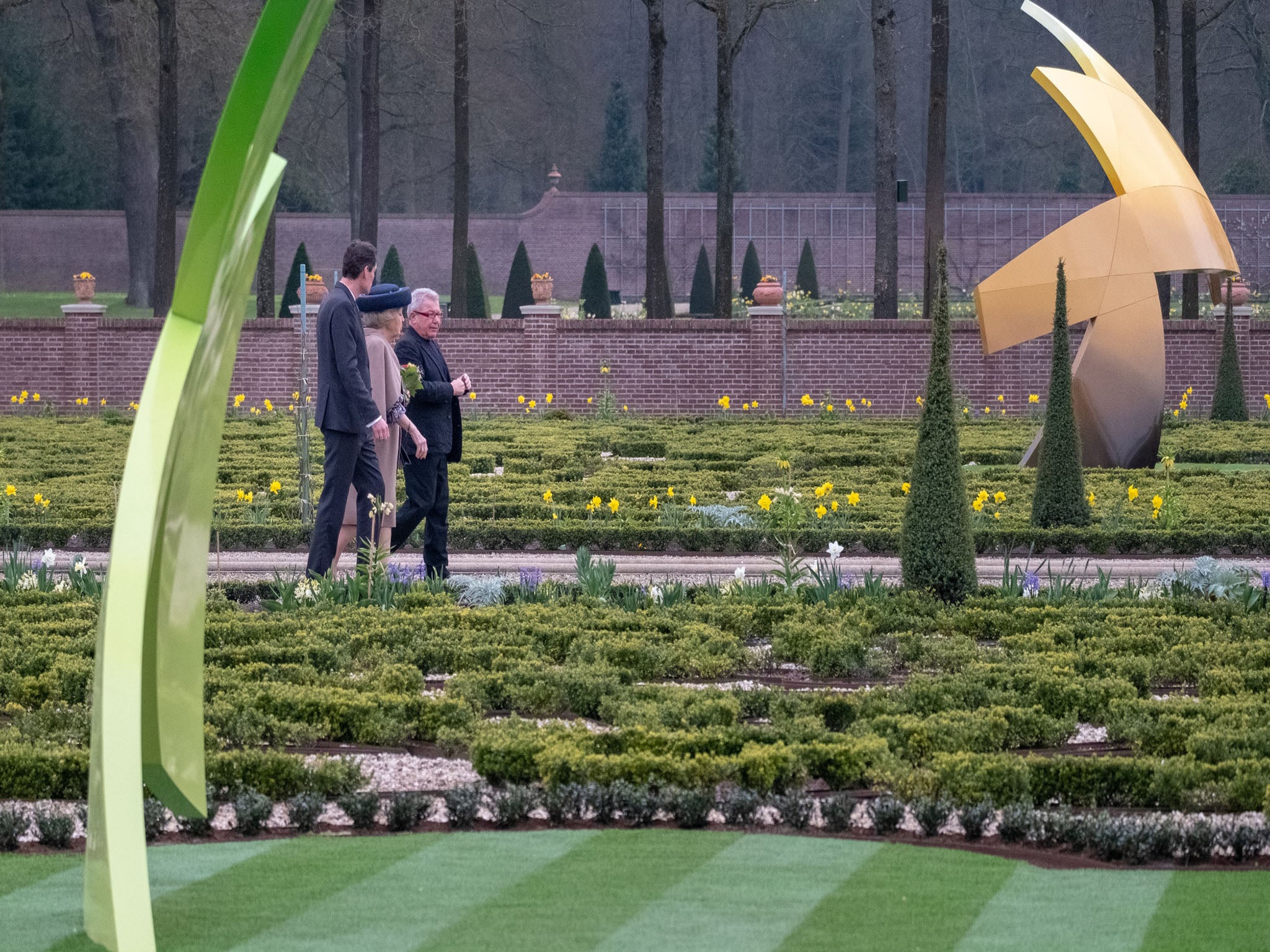
Walking through this hollow building was profoundly moving – exhilarating, disorientating, often intensely claustrophobic. But when I returned to see it when it was full of artefacts, I was actually a bit underwhelmed. The exhibits didn’t seem to fit the space. They diminished the power of the architecture. I wasn’t the only one who thought it worked better when it was empty.
This is a common criticism of Libeskind – that his buildings work better as artworks than they do as architecture. Personally, I don’t think this matters all that much. Many of the commissions he secures tend to be for commemorative spaces – contemplative places where people come to ponder. The contents are strictly secondary. The apotheosis of this approach was his master plan for Ground Zero in NYC – a site he was born to build. His father had seen the World Trade Centre being built (he’d been working in a print shop around the corner). Watching those Twin Towers going up was part of Libeskind’s family story, part of his family’s exodus to the New World.
The genius of Libeskind’s design was that he resisted the urge to build. It would have been so easy to erect something spectacular, something that expressed the immense power of America. Instead, Libeskind focused on the immense loss, the countless lives that had been obliterated. The focal point of his Ground Zero is two huge pools, water gushing down into the earth. The effect is sombre yet restorative. Water rejuvenates, water heals. Like all his buildings, it has a spiritual dimension. It’s not a secular space.
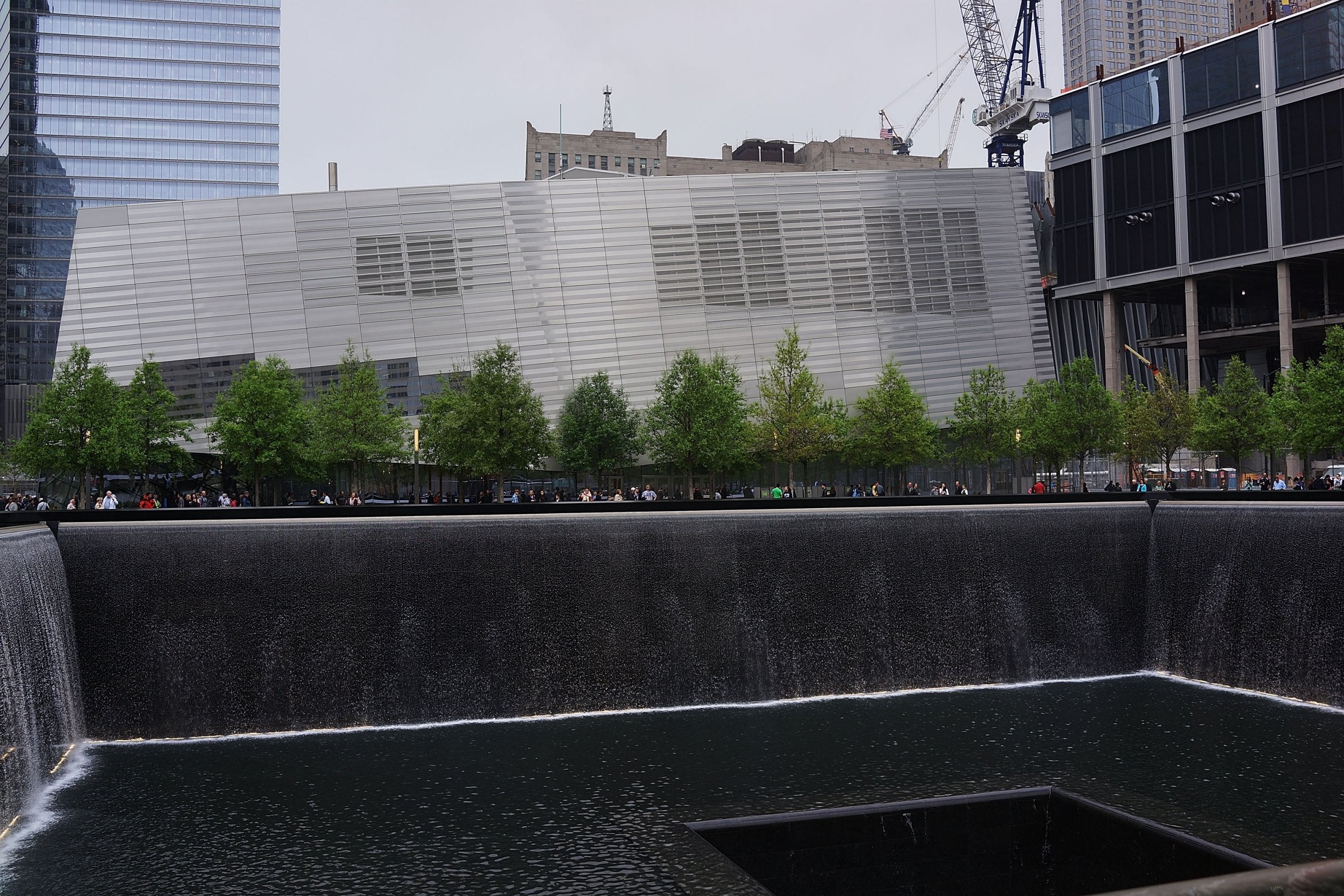
For Libeskind, it’s not the building blocks of architecture which are important. It’s the space the architect creates between those blocks, spaces where people live and breathe. It’s no surprise that he started out as a musician. His work is closer to music than geometry, closer to religion than engineering. Like music, the feeling that his buildings evoke is something you cannot see.
“I think that memory is the foundation of architecture,” he tells me. “It’s not real estate – it’s not how much land you own. It’s memory, which is underpinning our connection, both to the past and to the future.”
I think that memory is the foundation of architecture
One of his most successful projects is his Imperial War Museum North, in Salford – not merely as a construction in its own right, but for what it did for the surrounding area, after generations of neglect. “When I started, the area was really devastated,” he recalls. “There was almost nothing.” His building became the catalyst for the regeneration of an entire district. “Life has come back. It’s not just about the building. It’s about the community.”
Modern architects like him have rejuvenated Britain’s cities, so why are we still so suspicious of modern architecture? “I don’t know,” he says. “Maybe it’s nostalgia – nostalgia for the past. Maybe Brexit is part of that nostalgia, but the world moves on. The world doesn’t wait – it just moves on.”
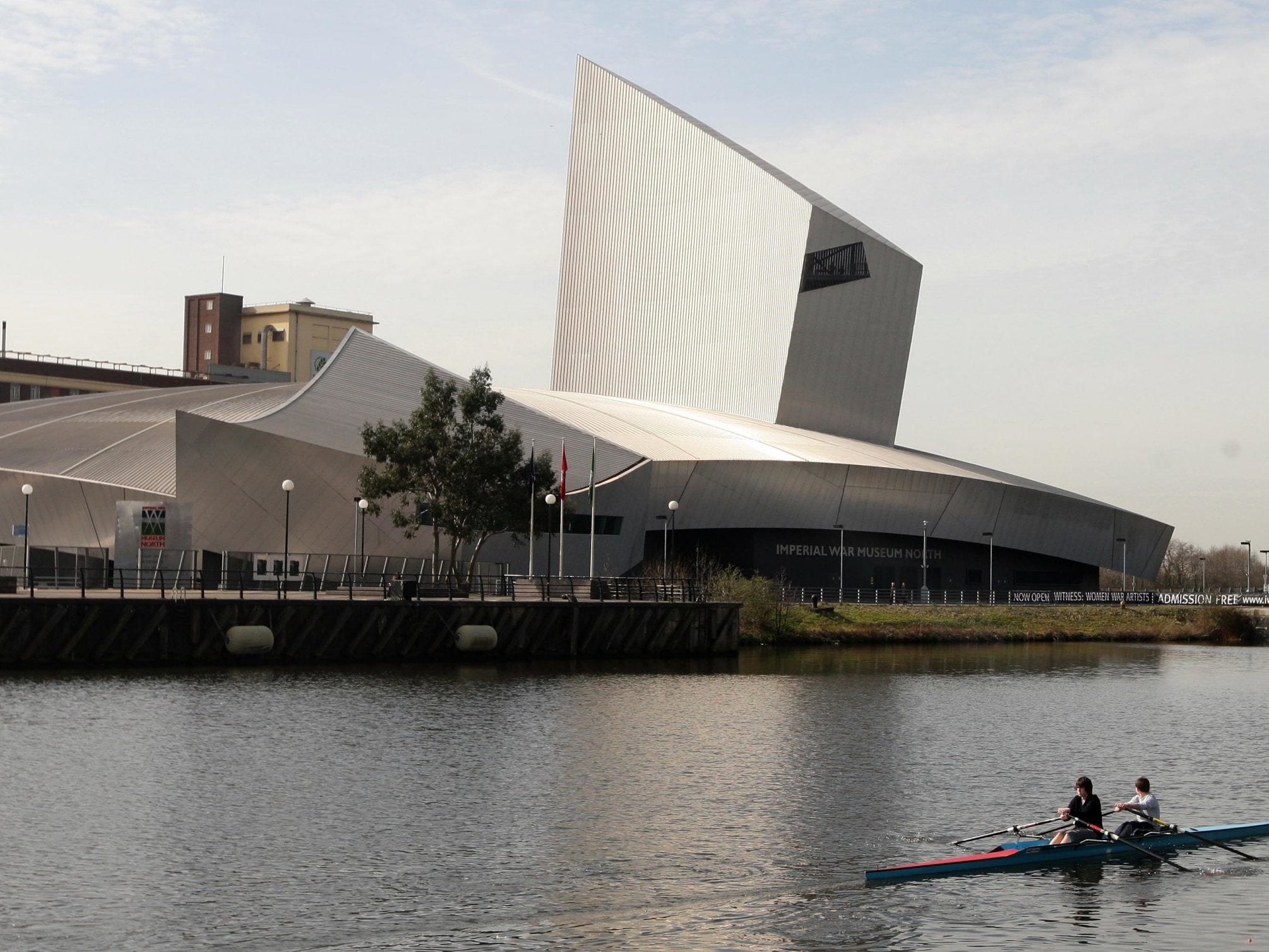
He has American and Israeli citizenship. He has Polish and Jewish heritage. He works all around the world. Theresa May said citizens of the world were really citizens of nowhere. So which is he, I ask him – a citizen of nowhere or a citizen of the world? “I certainly don’t feel that I’m nowhere – I’m always somewhere,” he replies. “I’m working on every continent in the world. I’m working in Australia and Africa, the Middle East and Far East, South America, North America… And what is interesting is that everywhere I go, whether it’s a village in South America, whether it’s in Africa, whether it’s China, whether it’s in the Middle East, whether it’s in Europe or America, everybody feels they live in the centre of the world.”
‘The Garden of Earthly Worries’ is at Palei Het Loo, Apeldoorn, Holland, until 2021 (www.paleishetloo.com/libeskind)
Subscribe to Independent Premium to bookmark this article
Want to bookmark your favourite articles and stories to read or reference later? Start your Independent Premium subscription today.
Join our commenting forum
Join thought-provoking conversations, follow other Independent readers and see their replies
Comments